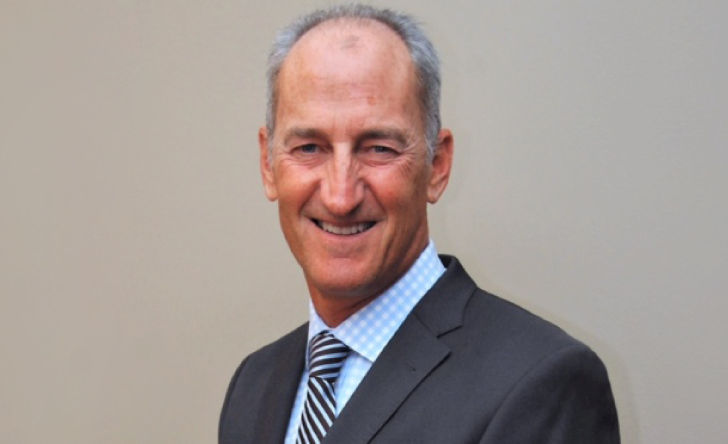A strategic distribution alliance initiated by The Edge Benefits with five managing general agencies (MGAs) is expected to triple the number of living benefits advisors that the third-party administrator works with in Canada and add as much as $5 million in premiums to its bottom line in three to five years.
Neil Paton, president and CEO of Newmarket, Ontario-based Edge Benefits, told The Insurance and Investment Journal that the agreement to provide its proprietary disability products to PPI Solutions, HUB Financial, Financial Horizons, IDC Worldsource Insurance Network and Customplan Financial Advisors Inc. officially takes effect January 1, 2017.
Paton said the number of financial advisors in Canada working with benefits such as disability insurance is dropping, while the number of self-employed and small business firms without traditional health benefits has grown. This is despite the fact that people are three times more likely to claim on a disability policy during their working careers than on a life insurance policy.
A growing gap
“There’s a big gap that’s getting bigger because advisors are not comfortable talking to their clients about disability in general and, as a result, the block [of advisors selling disability] is not growing. It’s a bit of a problem we’ve seen for quite some time and it’s part of this initiative to do something about it.”
A few years ago, Edge Benefits reworked its business model to include employed wholesalers that signed on three large accounts – Co-operators, which bought a majority interest in Edge Benefits in May 2015, as well as Sun Life and Primerica, said Paton.
The distribution arms of the three insurers, plus the alliance with the MGAs could increase the number of advisors who can sell Edge Benefit’s proprietary suite of products from 25,000 to 75,000, Paton estimated.
Jim Virtue, president and CEO of PPI Solutions, said he is looking forward to working with Edge Benefits.
“At PPI Solutions we offer a full range of companies and products to meet client needs, and we are pleased to add the niche disability products from Edge Benefits to our overall offering, and to work with the dedicated people at their firm.”
In the past, Paton said his company was not able to work with any MGAs because it used to act as one itself. With that behind it, Paton said Edge Benefits is moving forward to take its simplified, innovative products and teaching formula to a bigger field of brokers.
“The pitch we made to the senior executives of the MGAs was this: just leave it with us. We are going to take the expertise that we brought to the table and bring that to your advisors and we’re quite sure that that model is going to be successful.”
Paton said a big point of concession for Edge Benefits was agreeing to no longer compete with MGAs in the marketplace. “In the past we used to allow advisors to come and contract with us directly without having any MGA relationship. We recognize that was a decreasing number of advisors. Some of the [MGA] executives we met with said they were not interested in a relationship with us if we were going to continue to compete. So we looked at our business, looked at how much it was relative to this opportunity and decided it made sense to us to make a commitment to some of the current MGAs we already have, as well as the five new national MGAs.”
Ron Madzia president of IDC WIN, said one of his MGA’s main priorities in 2017 is to create more awareness about living benefits the new alliance will enable the firm to achieve this goal. “We have the ear of the advisors who do business with us and they are more inclined to do business with IDC WIN…as opposed to dealing with EDGE on a direct basis. This new arrangement will make it easier to do business with Edge Benefits and we welcome the opportunity to strengthen specialty markets sales.”
The relationships Edge Benefits currently has with independent advisors will be grandfathered. New advisors who come knocking on their doors will be referred to one of the MGAs rather than dealing directly with the company, he said. But Edge Benefits will continue to be the sole distributor of its proprietary products in Canada.
Simplified approach
The company offers a simplified approach to offering complex living benefit solutions with the target market of self-employed and small business owners.
Paton said Edge Benefits is a leader in the industry with its electronic application form, with more than 70 per cent of its business done electronically.
The company will start setting up webinars in December for advisors in the five MGAs and will then go on a national road tour in January, February and March to get in front of the MGA regional centres.
Some brokers, said Paton, may not be pleased with the fact that Edge Benefits does not offer annualized commissions. However, he said they do provide higher compensation in the renewal years. It means that advisors who typically receive a large chunk of money on the sale of some products will not face a massive chargeback if the client cancels after the first year or two.
Stream of income
“What happens is that when you sell a product we’re basically building a stream of income … and that then grows and grows,” he said. “We are paying five times what the industry is paying in renewals and that is a conscious decision we made. We do not have chargebacks if the client cancels the policy in the first year or two – you won’t have to worry about that. You build a nice block of business so that after five or 10 years in the business you have a meaningful dollar amount coming in – almost like your retirement income.”
While 2% is usually the going rate elsewhere in the industry for renewals, Edge Benefits gives about 10%. This applies to all disability-related products, but Paton said even its non-disability products generally pay 6% or three times the going rate.
With a growth in the number of advisors selling products like disability, Paton hopes they will be able to open doors to boost life insurance sales as well.
Achievable goals
Paton said the feedback so far from those involved has been “overwhelming,” but he’s set conservative, achievable goals for the future.
“We are comfortably feeling that we can hit the $1 million of premium on average per MGA within the next few years.”
That’s on top of the total $4 million of business the company is doing with the three major accounts.
While Edge Benefits does have competition in the living benefits field, Paton said there is one major difference. “We are not flogging product. What we are doing is teaching advisors and helping them have conversations with their clients about lifestyle protection – make sure they have income protection in the event they can’t work or illness or injury, make sure they have critical illness coverage,” he said. “We’re not trying to be all things to all people.”
In fact, he said that potential clients like professionals who come to Edge Benefits with questions are told to go another manufacturer where they can get the coverage best suited to their needs. He said his firm is concentrating solely on the self-employed and business owners market where they don’t offer an employee benefit program.









